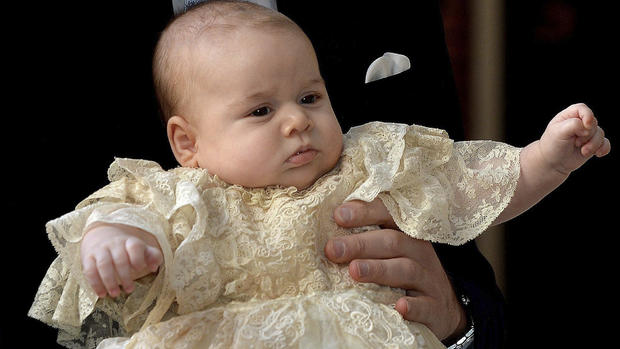Doctors say donating baby's umbilical cord blood can save a life
Prince William and Kate, the Duchess of Cambridge, are now the proud parents of a royal baby boy.
CBS News chief medical correspondent Dr. Jon LaPook said that some of the first decisions the new parents and their medical team likely had to make involved the baby's umbilical cord.
Before a baby is born, the umbilical cord is the life-sustaining connection between a fetus and the mother. The cord is specifically connected to the placenta, which is attached to the mother's uterine wall. It allows the growing fetus to get nutrients, eliminate waste and get necessary gases like oxygen from the mother.
After delivery, the doctor or a midwife will normally clamp the umbilical cord in two places and then have someone cut between the spots. When the umbilical cord is cut shortly after birth, it leaves a stump that will heal, dry and fall off naturally by the time the baby reaches 4 weeks old.
A recent study from The Cochrane Library, which reviewed 15 studies involving 3,900 women and their babies, showed that waiting to clamp and cut the cord between one and three minutes after birthled to higher birth weights and iron levels in newborns, compared with those whose cords were cut sooner.
However, babies whose cords were cut later also had an increased risk of jaundice, a yellowing of the skin and eyes caused by the buildup of a blood byproduct. This issue can be resolved within two weeks of birth, but can cause complications if left untreated.
- Not cutting umbilical cord immediately may boost baby's health
- Umbilical cord blood: Save it and save lives
The World Health Organization recommends cords be cut one to three minutes after birth. The American College of Obstetricians and Gynecologists has no official recommendation. But, the organization points out research that shows cutting the cord at least 30 to 60 seconds after birth has health benefits. Other studies have suggested that preterm infants should have their cord cut as late as possible, which typically means two to three minutes after birth.
After the cord is cut, the placental blood or "cord blood" inside it can serve an important medical purpose. This cord blood contains red and white blood cells, platelets, plasma and most importantly, it contains blood-forming hematopoietic stem cells that are similar to the ones found in bone marrow. These stem cells can be used for transplants.
The cord blood can be stored at a cord blood bank so it's available in case a match is found for a transplant. LaPook explained that about there are about 200,000 public cord blood donations on reserve in the U.S. that are available to whoever needs to use it. Still, many more donations are needed to meet the demand.
Other parents opt to store their babies' cord blood with private companies that save it in case that child or a sibling ever needs it. Some 900,000 private reserves have been put aside in this way, LaPook said that most of these will go unused.
Currently, there are only about 200 hospitals in the U.S. set up as collection sites for cord blood donations. However, a donation kit which runs several thousand dollars is available for parents who want to be able to contribute their baby's cord blood for whoever needs it. A doctor collects the cord blood after birth and and sends it off for proper storage.
For more on cord blood donations, visit the National Cord Blood Program website.

